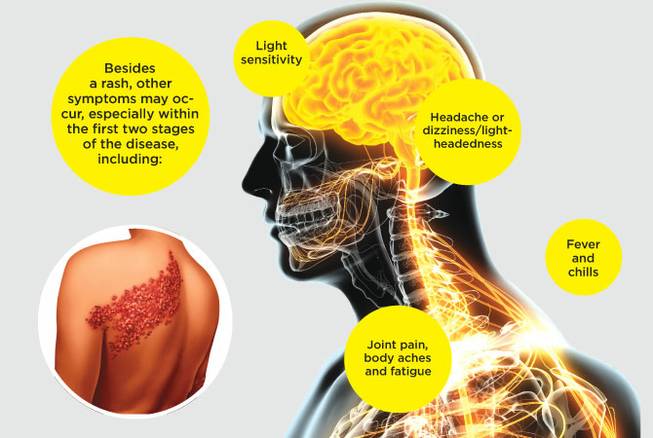
Monday, June 5, 2017 | 2 a.m.
The Centers for Disease Control and Prevention estimates that nearly 1 in 3 people in the United States will get shingles at some point, and 1 million new cases are diagnosed annually.
Caused by the chickenpox virus, “shingles represents a reactivation of the virus, typically affecting patients who have a compromised immune system because of age, disease or other factors,” said Alex Akhondi, MD, FACP, associate program director of internal medicine residency at MountainView Hospital.
Shingles causes a painful skin rash and can be accompanied by flu-like symptoms.
What is shingles?
The virus that causes both shingles and chickenpox is called the varicella-zoster virus (VZV).
“The primary infection of VZV results in chickenpox, which is characterized by different-looking rashes on the face, trunk and limbs, and usually occurs during childhood,” Akhondi said. Chickenpox affects people during a short period of time while it’s active, but the virus continues to lay dormant in the body throughout the patient’s life.
Shingles occurs when the dormant virus suddenly reactivates and causes new symptoms. The exact mechanisms that prompt this are not completely understood, but it occurs in patients with weakened immunity.
Shingles is much less contagious than chickenpox, and the virus can be spread only through direct contact with the rash. Someone with shingles cannot pass the rash itself to someone else, but they can pass the virus to someone who has never had chickenpox. For example, a child who has never been exposed to the virus can catch chickenpox from a parent with shingles, but the child can’t catch shingles.
Risk factors
Anyone who has had chickenpox is at risk for developing shingles. However, some people may have had chickenpox unknowingly. “Many people get mild forms of chickenpox as children, with only a cough and cold-like symptoms and/or a mild rash. Therefore, they may have had chickenpox at some point and not known it until shingles developed,” Akhondi said.
The biggest risk factor for shingles is a compromised immune system, and the risk increases with age. The CDC reports that approximately half of all shingles cases occur in people 60 or older. It’s recommended that most people above this age get vaccinated.
Symptoms and stages
“The rash is painful, localized and shaped like a band,” Akhondi said. The location of the rash can appear anywhere, but typically it’s contained to one side of the body or the face.
From start to finish, shingles usually lasts between two to four weeks, but the timeline can vary between patients. Some severe cases can last longer than a month.
While the length of time differs, shingles tends to develop in three distinct stages:
1. Before the rash appears
Patients will begin to feel the rash before it shows up on the skin. “It’s an unusual sensation — it can feel like pain, burning, tingling or itching. A few hours or days later, the rash appears in the same place,” Akhondi said. These symptoms can last for up to five days.
2. The rash
Once the rash appears, it presents as a cluster of painful, red blisters that are filled with fluid and may feel wet/moist to the touch. This stage typically lasts seven to 10 days, and Akhondi says the first few days tend to be the most painful and uncomfortable. Patients are contagious during this period.
3. Healing
After about a week, the rash begins the healing process and scabs/crust form over the blisters. The scabbing usually heals within one to three weeks, but it can take up to a month for the skin to completely return to normal. Once the rash is entirely scabbed over and no new blisters appear, patients are no longer contagious.
Besides a rash, other symptoms may occur, especially within the first two stages of the disease, including: Headache or dizziness/lightheadedness; light sensitivity; fever and chills; joint pain, body aches and fatigue
Treatment
“Shingles is treated with specific antiviral medications that suppress the disease and lessen the duration of symptoms, but the virus cannot be eradicated from the body completely,” Akhondi said.
Patients with shingles should seek medical care as soon as possible because antiviral medications are most effective when taken early. Some people may also need medication to manage the pain/itching, but keeping the lesions dry and clean can help limit those symptoms.
Complications
A complication of shingles is post-herpatic neuralgia (PHN), which causes the patient to continue to feel pain at the rash site even after the rash has healed. This occurs as a result of the virus damaging the nerve cells.
PHN usually lasts one to two months but occasionally can continue for over a year. It can be treated with neuropathic pain medication and most commonly occurs in patients older than 60.

Join the Discussion:
Check this out for a full explanation of our conversion to the LiveFyre commenting system and instructions on how to sign up for an account.
Full comments policy